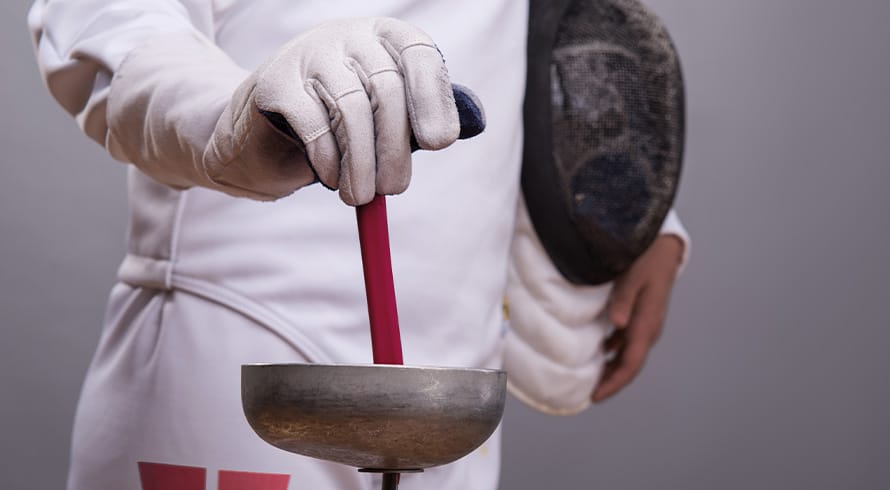Expanding the list of zero-rated foodstuffs: Will it really benefit the poor?
At a glance
- On 18 July 2024, President Cyril Ramaphosa stated that the Government of National Unity will look to expand the basket of essential food items exempt from value-added tax (VAT) and undertake a comprehensive review of administered prices.
- However, several studies have raised concerns about the effectiveness of zero-rating as a mechanism to provide relief for the poor and to achieve equity objectives. They show that the zero-rating of basic foodstuffs benefits all consumers, and that it may benefit high income households substantially more than poor or low income households.
- Specifically targeted relief measures aimed at poor and low income households are much better suited to address the difficulties faced by these households in relation to high food prices and malnutrition.
This is not surprising since the 2024 National Food and Nutrition Security Survey stated that 3,7 million households in South Africa reported inadequate or severely inadequate access to food. The 2024 South African Food Security Index published by Shoprite, in conjunction with Stellenbosch University, indicated that food security in South Africa was at its lowest point in 2023 relative to the period 2010–2023. Furthermore, the number of people in South Africa not meeting the minimum energy requirements increased from 1,8 million in 2001 to 4,7 million in 2021 and by 2023, 23,6% of households were consuming a lower variety of food than usual given economic constraints.
The calls for expansion of the list of zero-rated foodstuffs cite two main reasons. Firstly, it will reduce the cost of food items for poor households in the wake of high food price inflation. Secondly, adding more protein to the zero-rated basket will encourage poor and low income households to add more protein to their diets to address malnutrition.
The question that arises is whether adding more food items to the basket of zero-rated foodstuffs will indeed reduce the cost of these items, and whether it will address malnutrition.
History of zero-rating foodstuffs
Without any zero-rating or exemptions, VAT is inherently a regressive tax. This is because the amount of VAT paid by lower income households on essential goods and services as a percentage of their disposable income is higher than that of high income households, although high income households may spend higher amounts on VAT in absolute terms. The zero-rating of basic foodstuffs is aimed at alleviating the regressivity of the tax.
When VAT was introduced on 30 September 1991 at a rate of 10%, only two food items were initially zero-rated: brown bread and maize meal. The number of zero-rated food items was subsequently temporarily increased from 30 September 1991 to 31 March 1992 with the addition of another eight items. The zero-rating of these additional eight items was extended from 1 April 1992.
With effect from 7 April 1993, when the VAT rate was increased from 10% to 14%, the basket of zero-rated food items was expanded by a further nine items to increase the total number to nineteen. Following the VAT rate increase from 14% to 15% on 1 April 2018, the zero-rated basket was expanded further with the addition of cake wheat flour and white bread wheat flour from 1 April 2019. Sanitary towels were also zero-rated with effect from 1 April 2019.
Currently, the basket of basic foodstuffs that are zero-rated comprises of 21 food items. In addition, zero-rating also applies to petrol and diesel, illuminating kerosene and sanitary towels. Petrol and diesel are, however, subject to excise duties, the fuel levy and the Road Accident Fund levy. Furthermore, public transport by road and rail, and the provision of residential accommodation are exempt from VAT.
Previous studies
A number of studies, both globally and in South Africa, have been conducted over the years to determine the effect of zero-rating basic foodstuffs on alleviating the regressivity of VAT, and the implications of zero-rating. Some of these studies and their findings are discussed below.
The Katz Commission extensively considered the incidence and benefits of the zero-rating of basic foodstuffs. Its interim report in 1995 stated that zero-rating benefits the poor modestly in absolute rand terms and benefits the non-poor by substantially greater amounts. Moreover, it found that, of the total revenue loss due to zero-rating, only approximately a third of the benefits went to low income households. The Katz Commission stated that the zero-rating of basic foodstuffs may be considerably less beneficial to consumers than is commonly assumed, and concluded that any further erosion of the VAT base through zero-rating or exemptions should not be considered in view of the limited contributions that such measures make to the relief of poverty.
A study conducted by the Organisation for Economic Cooperation and Development in 2015 found that, despite the progressive effect of reduced rates on food products, reduced VAT rates are a very poor tool for targeting support to poor households. At best, rich households receive as much benefit from the reduced rate as poor households and, at worst, rich households benefit vastly more than poor households. The study indicated that in some cases, the benefit to rich households is so large that the reduced VAT rate actually has a regressive effect in benefiting the rich much more in absolute terms.
The Davis Tax Committee also considered the zero-rating of basic foodstuffs in some detail. In its final report on VAT to the Minister of Finance (29 March 2018) it referred to a study conducted by National Treasury in 2006 which found that the zero-rating of specific foodstuffs provides a larger proportional benefit to the poor, thereby enhancing progressivity, but it provides a larger absolute benefit to the rich, who consume larger quantities. The report also referred to studies conducted by Professor Ingrid Woolard and by Inchauste et al which found that the zero-rating of foodstuffs results in the South African VAT system being essentially neutral or even slightly progressive. It noted that the poor benefit more from certain food items such as brown bread and maize meal, but the wealthy benefit substantially more from zero-rating of items such as milk and fruit and vegetables. Accordingly, the wealthy not only also benefit from the zero-rating of food but for some items they benefit significantly more than the poor. The Davis Tax Committee concluded that zero-rating is a very blunt instrument for the pursuit of equity objectives, and it strongly recommended that no further zero-rated food items should be considered.
When the VAT rate was increased from 14% to 15% on 1 April 2018, the Minister of Finance appointed an independent panel of experts to review the zero-rating of various items, including bread, white bread flour, cake flour, school uniforms, baby formula, individually quick frozen (IQF) poultry parts, sanitary towels and nappies. With regard to IQF poultry parts, the panel could not reach consensus on its zero-rating. Some panel members raised a concern that the definition was not sufficiently clear, which could give rise to abuse. Other concerns raised were the cost of foregone revenue, that zero-rating could encourage imports, and that the benefits would not be passed on to consumers. The panel stated that nutritional programmes would be more efficient to offset the higher cost for low income households.
Although there is consensus that zero-rating of basic foodstuffs alleviate the regressivity of VAT, there also seems to be consensus that no further food items should be zero-rated as a means to alleviate the impact of high foods prices on poor and low income households. There is also no evidence that adding more protein to the zero-rated food items basket will get poor or low income households to add more protein to their diet.
Implications of zero-rating
Apart from the concerns raised by these studies, mainly that the zero-rating of basic foodstuffs benefits all consumers, and that it may benefit high income households substantially more than poor or low income households, the following consequences of zero-rating should also be considered.
- Zero-rating results in foregone revenue for the fiscus. The deputy Minister of Finance recently indicated that the zero-rating of the current list of 21 food items costs the fiscus approximately R30 million in lost revenue. This amount does not seem to include the lost revenue resulting from illuminating kerosene and sanitary towels. The panel of experts estimated at the time (in 2018) that the zero-rating of IQF poultry parts would cost the fiscus R2,1 billion in foregone VAT revenue.
- The food items that are zero-rated must be accurately defined to ensure clarity and to avoid interpretational challenges and abuse. If the food items are not clearly identified, then it creates an opportunity for misclassification of other similar products, and potentially increased litigation to obtain clarification.
- Zero-rating distorts consumer preferences. If the demand for the zero-rated food items increases because of the zero-rating, that could in itself give rise to shortages of the product in the market with a resultant increase in the price, which would eliminate any benefit of the zero-rating for poor or low income households.
- Zero-rating gives rise to administrative complexities for both suppliers and the South African Revenue Service. The items that qualify for zero-rating need to be accurately identified, and systems need to be implemented to ensure the correct and accurate VAT accounting and reporting in relation to these items.
- There is no guarantee that suppliers will pass the benefit of zero-rating on to consumers. Suppliers could keep the selling price of zero-rated food items the same as the current VAT inclusive price, on the pretence of higher costs of production. The benefits of zero-rating are then captured by suppliers in the form of higher margins, as the Davis Tax Committee reported was the case when illumination kerosene was zero-rated.
- If a poor or low income household cannot afford to purchase a particular food item in the first instance, then the zero-rating of the item is unlikely to make it affordable.
- In terms of section 13(3) and Schedule 1 of the VAT Act 89 of 1991, all zero-rated foodstuffs are exempt from any VAT payable on the importation of these goods into South Africa. This may be an incentive for importers, which could give rise to increased imports. The impact of increased imports on local producers must be considered. Furthermore, if the intention is to make these food items more affordable to poor and low income households and to address malnutrition, any import tariffs on the foods items to be added should be reviewed. However, the removal of import tariffs will negatively affect local producers.
Alternatives to zero-rating
There is no doubt that poor and low income households suffer from high food price inflation and possibly malnutrition. If the zero-rating of basic foodstuffs is not an effective means to alleviate the plight of poor and low income households, then what is the alternative?
The Katz Commission, the Davis Tax Committee and the panel of experts all stated that it would be substantially more efficient to rather collect the tax revenue on food items and to redistribute the additional income through a targeted transfer to the poor. The panel recommended that as an alternative to zero-rating, the monthly social grants and old age social pension should be increased. The Davis Tax Committee noted that more than 75% of households in the poorest four deciles already receive cash transfers and such cash transfers could be increased. The panel also recommended, as alternatives to zero-rating, the introduction of food vouchers where cash grants are not feasible or practical, and upscaling of feeding schemes. To address the issue of nutrition, the panel made various recommendations, including the upscaling of high impact nutrition interventions targeting women, infants and children, and the expansion of the national school nutrition programme.
Conclusion
As confirmed by various global and local studies, the VAT system is not an effective tool to provide relief to poor and low income households, mainly because the benefit of zero-rating is enjoyed by all consumers, even more by those who can afford the food items and to pay the tax. There is no clear evidence that VAT causes food price inflation, which is mainly driven by input costs. There is general consensus that specifically targeted relief measures aimed at poor and low income households, such as increased social grants and old age social pensions, food vouchers and the expansion of the national school nutrition programme, are better suited to address the difficulties faced by these households in relation to high food prices and malnutrition.
The information and material published on this website is provided for general purposes only and does not constitute legal advice. We make every effort to ensure that the content is updated regularly and to offer the most current and accurate information. Please consult one of our lawyers on any specific legal problem or matter. We accept no responsibility for any loss or damage, whether direct or consequential, which may arise from reliance on the information contained in these pages. Please refer to our full terms and conditions. Copyright © 2025 Cliffe Dekker Hofmeyr. All rights reserved. For permission to reproduce an article or publication, please contact us cliffedekkerhofmeyr@cdhlegal.com.
Subscribe
We support our clients’ strategic and operational needs by offering innovative, integrated and high quality thought leadership. To stay up to date on the latest legal developments that may potentially impact your business, subscribe to our alerts, seminar and webinar invitations.
Subscribe




